To outwit a giant hornet, scientists try speaking its language
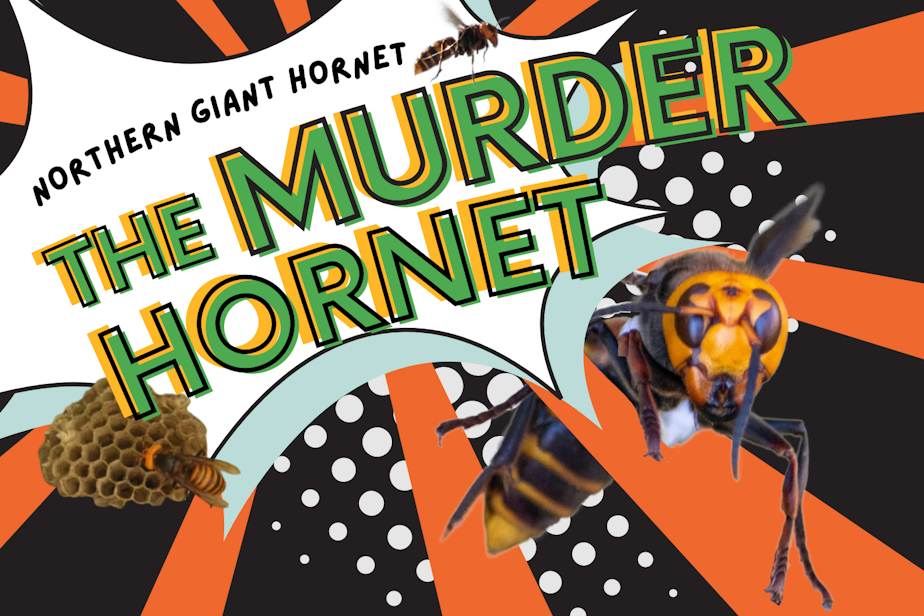
Even the biggest insects’ brains are very small, though not so small they can’t communicate with each other—or, to an extent, with human beings.
Researchers in Washington state, Japan, and South Korea aim to tell the world’s largest hornets where to go by speaking the insects’ language: the potent, wafting substances known as pheromones.
Of all the species from afar that have invaded Washington state, one has excited the public imagination more than any other: the northern giant hornet, sometimes called, a bit unfairly, the murder hornet.
Since the first massive hornet showed up in our region in 2019, officials in Washington and British Columbia have been trying to eradicate the species.
Now, researchers are partnering with scientists in Japan and Korea to try to outsmart the world’s largest hornet.
Sponsored
This story is Part 4 of our series on invasive species in Washington state: “KUOW's League of Murder Creatures.”
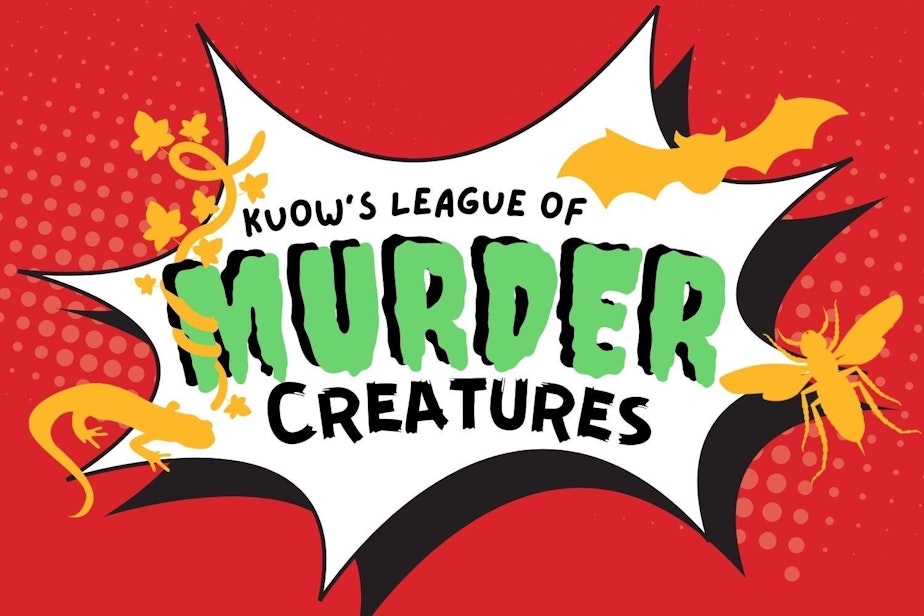
M
any insects are polyglots: They “speak” languages ranging from airborne sounds to surface vibrations to waggle-dances to chemical aromas.
Sponsored
When Asian honeybees are threatened by giant hornets, they emit sharp, high-pitched alarm signals called “pipes.” They also eavesdrop on the hornets’ own alarm signals.
Wellesley College biologist Heather Mattila and colleagues recorded beehives in Vietnam and found the bees vibrate their little bodies and hold them against a solid object to amplify their anti-predator alarms.
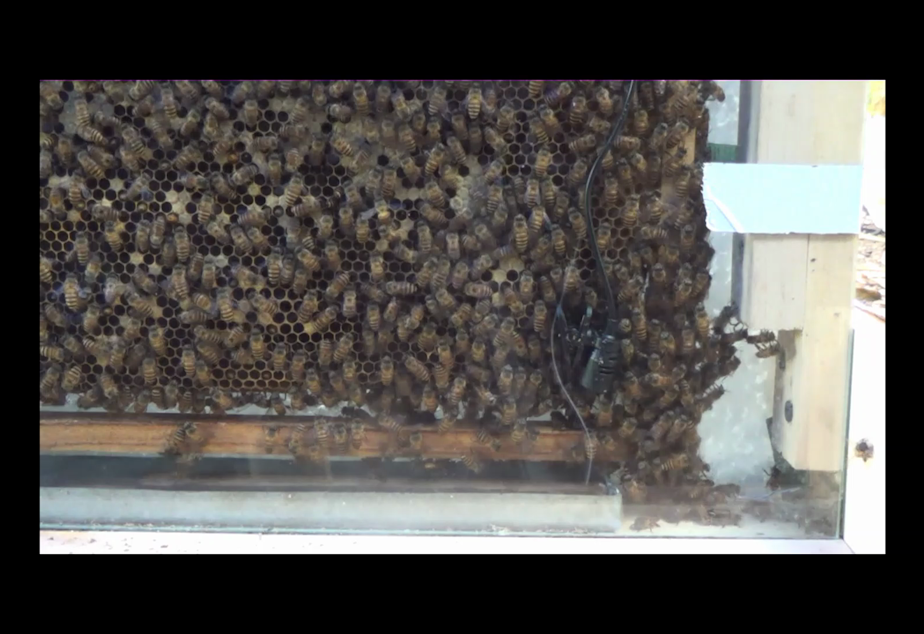
 18 secs
Asian honeybees in a hive in Vietnam make "pipe" calls to each other when they sense a threat from a southern giant hornet.
18 secs
Asian honeybees in a hive in Vietnam make "pipe" calls to each other when they sense a threat from a southern giant hornet.
“Antipredator pipes share acoustic traits with alarm shrieks, fear screams, and panic calls of primates, birds, and meerkats,” Mattila and her coauthors write.
The quick communication helps the bees mount a collective defense against their much larger predators.
Sponsored
European honeybees, which North American agriculture depends on to pollinate billions of dollars worth of crops, have no such defenses.
So, to mount a more effective defense against an incipient hornet invasion along the Washington-British Columbia border, researchers are hoping to lure the giant hornet to its doom with its own chemical signals.
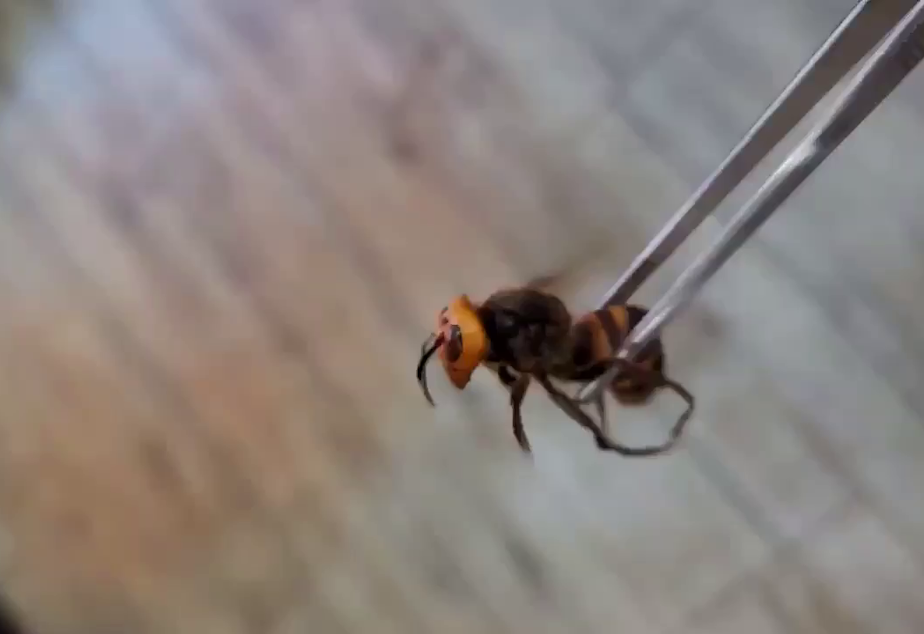
 11 secs
A captured northern giant hornet, sounding more like a hedge trimmer than an insect, flaps its wings in Uiseong, South Korea, in October 2022.
11 secs
A captured northern giant hornet, sounding more like a hedge trimmer than an insect, flaps its wings in Uiseong, South Korea, in October 2022.
To signal danger to each other, hornets emit substances known as alarm pheromones. Next to each hornet’s stinger is a gland that contains both venom for stinging and alarm pheromones for calling in reinforcements.
“If you see someone messing with a bald-faced hornet nest or a yellowjacket nest or something, they usually get swarmed, right?” said entomologist Jacqueline Serrano with the U.S. Department of Agriculture’s Agricultural Research Service, in Wapato, Washington. “As they get stung, more and more alarm pheromone’s going to get released, so they’ll just keep attacking it until it's no longer a threat.”
Sponsored
Serrano and her overseas partners are testing four different giant-hornet lures: two based on different components of alarm pheromones, one that smells like honeybees, and one that is known to attract other types of wasps.
In the world of insect communication, pheromones are strong language.
One billionth of a gram can convince a hornet to go on the attack. Instruments in Serrano’s lab in Wapato, near Yakima, can detect one trillionth of a gram of various compounds that make up the pheromones.
“The idea with something like an alarm pheromone,” Serrano said, “is that we can hopefully attract them from several kilometers away.”
To attract the unwanted invaders, agriculture officials and volunteers have been setting out traps in the northwest corner of Washington state since 2020.
Sponsored
The recommended bait is a mix of rice wine and orange juice.
But that bait’s fruity smell can draw in lots of different insects, even beneficial ones. Alarm pheromones should be more selective and only attract the target species into a trap, Serrano said.
That way, trappers would “not have to deal with gross rice wine and orange juice and a bunch of fruit flies and a bunch of nasty bycatch,” she added.
Serrano has been testing different lures at sites in Whatcom County.
But there’s a problem: There are few if any giant hornets around to attract.
Nobody has spotted a giant hornet in North America since the summer of 2021, when insect specialists found and destroyed three of the invaders’ nests near Blaine, Washington.
T
he situation is very different on the other side of the Pacific Ocean, where these hornets have buzzed for millennia.
“There are northern giant hornets everywhere, even in large cities that Americans would know of—Tokyo, Osaka,” said Tottori University entomologist Hideshi Naka, speaking in Japanese through an interpreter.
Naka said the hornets are a familiar part of Japanese life, as well as a big problem for Japanese farmers and the honeybees they rely on to pollinate their crops.
“Most Japanese people know that if you are stung by a hornet twice, you will die,” Naka said. “So, they will immediately go to the hospital.”
Many Japanese farmers use traps to keep hornets out of their beehives. The smell of the hives themselves draws the hornets into the traps.
Giant hornets can destroy a whole beehive in a matter of minutes.
“Before you can even finish saying a word,” Naka said.
Giant hornets that have entered what entomologists call the “slaughter phase” will decapitate bee after bee to feed their innards to young hornet larvae back at the nest.
S
errano has partnered on the pheromone project with Naka in Japan and with Kyungpook National University researcher Choi Moon-bo in South Korea.
Choi said the hornets are a widespread hazard in South Korea, especially around Chuseok, Korean Thanksgiving.
“During Chuseok, many people mow the grass of their ancestors' graves and clean them up,” Choi said by email. “At this time, the giant hornets make many nests in the ground around their graves in the mountains. Therefore, when the grass is mowed, vibration is transmitted to the nest in the ground.”
The hornets grow alarmed and look for an enemy to sting.
“So many accidents happen,” Choi said.
He said giant hornets kill about five Koreans a year, with an equal or greater number killed by other wasp and hornet species.
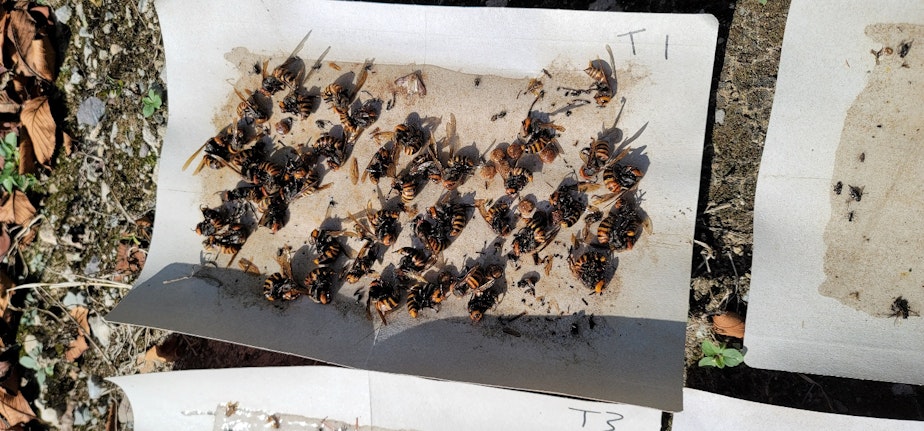
In addition to using sticky traps with a giant hornet for bait, Choi said, some South Korean beekeepers even swat away hornets, of various species, with badminton rackets.
(Safety announcement: Don’t try this at home.)
Choi recorded a captured giant hornet buzzing for KUOW, its wings sounding more like a hedge trimmer or model airplane than an insect.
“When you catch a giant hornet, you can hear a very powerful wing flight sound,” Choi said.
Naka and Choi are testing the pheromone traps to help with the giant hornet problem in the U.S.
But both entomologists said there’s not much use for northern giant hornet-specific traps in their countries.
“In Japan, they are one of the top predators within the insect food chain,” Naka said. “So only eradicating northern giant hornets means increasing other hornets.”
Naka said that would be an even more dangerous outcome.
“When it comes to this current research, our only motive is to help Washington state,” Naka said.
“It is similar to how predators such as lions, tigers, and wolves maintain the balance of ecosystems as apex predators in the large animal world,” Choi said. “Giant hornets are very common in Korea and act as regulators to control the appropriate number of pests in the ecosystem.”
Among the smaller hornet species in Korea and Japan is an invasive species, the yellow-legged hornet (Vespa velutina), that researchers say is aggressive and stings without being provoked, unlike the northern giant hornet (Vespa mandarinia).
So it’s more dangerous than the so-called “murder hornet.”
Naka said there’s no reason to use a word like murder in an animal's name, a sentiment shared by other biologists, even those who work to eradicate northern giant hornets.
“These are not going to hunt you down and murder you,” Washington state Department of Agriculture entomologist Sven Spichiger said at a press conference on the newly arrived giant hornets in 2020. “Your life is in danger if you walk into the nest of other stinging insects as well.”
The yellow-legged hornet found its way to the Korean Peninsula by way of the major port of Busan in 2003.
Researchers say a hibernating, pregnant hornet can survive weeks of travel on a cargo ship to establish a colony after landing in a new part of the world.
A decade later, the yellow-legged hornet invaded the small Japanese island of Tsushima, midway between South Korea and the major islands of Japan. By April 2022, after eight years on that isolated island, the hornet somehow made its way 50 miles across the Sea of Japan to the city of Fukuoka on Kyushu Island. From there it could easily spread throughout Japan.
Now that it has invaded the main islands of Japan, the yellow-legged hornet has prompted similar levels of alarm in Japan as the northern giant hornet has in Washington state.
“In Japan, we are having the same issue as in Washington state,” Naka said, only with a different stinging invader.
Back on the U.S. side of the Pacific, 2022 has been a quiet year for giant-hornet trappers, with no sign of this continent’s dreaded interloper.
But under federal rules, hornet exterminators won’t declare victory until they’ve gone three years without any giant hornets turning up.
Japanese interpretation by KUOW announcer/producer Natalie Akane Newcomb.
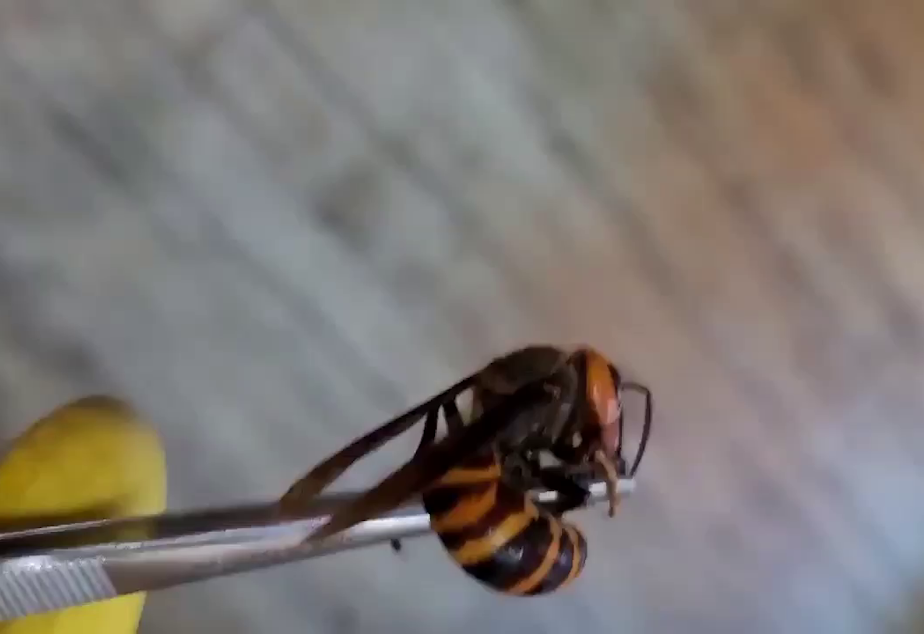
 1 min
A captured northern giant hornet, sounding more like a hedge trimmer than an insect, flaps its wings in Uiseong, South Korea, in October 2022.
1 min
A captured northern giant hornet, sounding more like a hedge trimmer than an insect, flaps its wings in Uiseong, South Korea, in October 2022.
This story is Part 4 of our series on invasive species in Washington state: “KUOW's League of Murder Creatures.”




